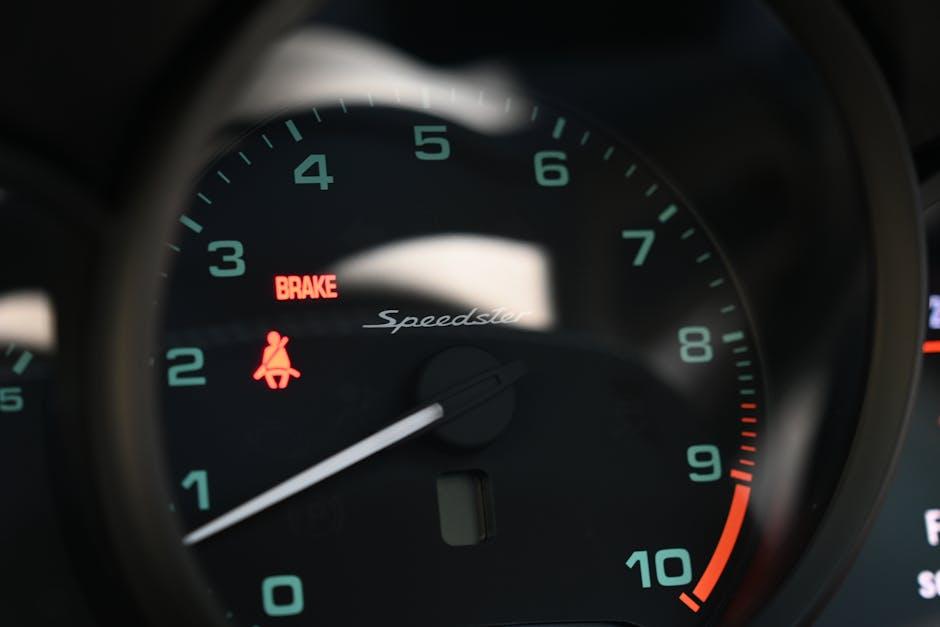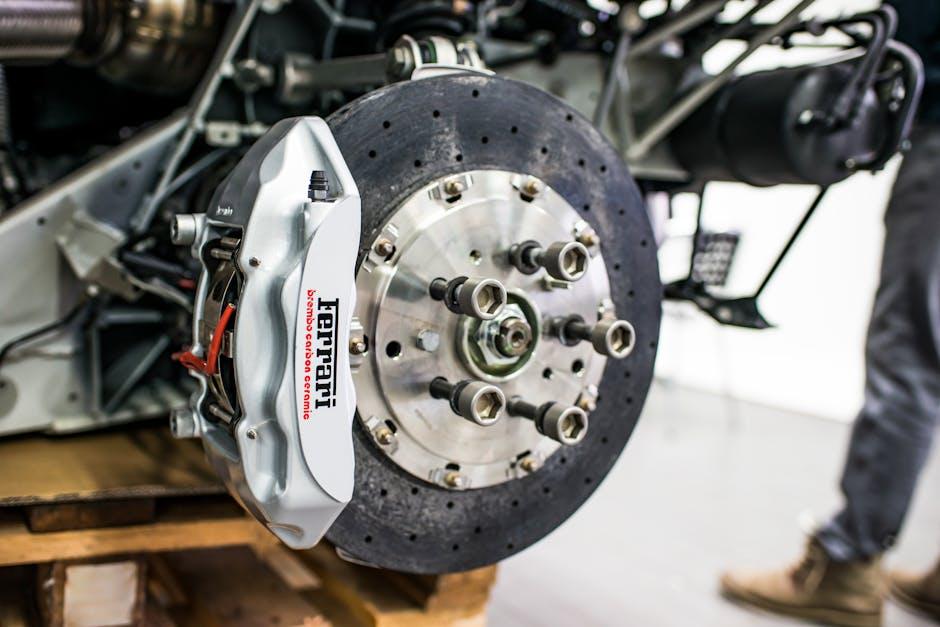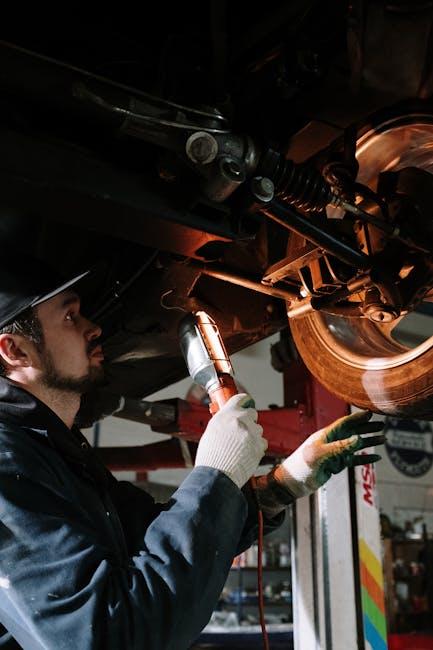When your automobile’s brakes begin performing up, it may possibly shortly flip a easy drive right into a nerve-wracking expertise. Brake hassle isn’t simply an inconvenience—it’s a security concern that calls for consideration. Luckily, many widespread brake points have simple options that don’t at all times require a visit to the mechanic. On this article, we’ll discover easy, sensible fixes for the on a regular basis brake issues that drivers usually encounter, serving to you get again on the highway with confidence and peace of thoughts. Whether or not it is squeaking, grinding, or a comfortable brake pedal, understanding the fundamentals could make all of the distinction.
Desk of Contents
- Understanding the Warning Indicators of Brake Issues
- Diagnosing Frequent Brake Points With no Mechanic
- Easy Upkeep Tricks to Maintain Your Brakes in Prime Situation
- Step by Step Options for Noisy or Ineffective Brakes
- To Conclude

Understanding the Warning Indicators of Brake Issues
Recognizing the early warning indicators of brake points can prevent from costly repairs and guarantee your security on the highway. Frequent indicators embrace a squealing or grinding noise if you apply the brakes, which regularly factors to worn brake pads that want quick consideration. You may also discover a pulsating sensation within the brake pedal or the steering wheel vibrating when braking, signaling warped rotors or uneven brake put on. Moreover, a brake pedal that feels spongy or sinks too low can point out air within the brake strains or fluid leaks, compromising the effectiveness of your braking system.
Maintain a watch out for the next delicate signs that may usually be neglected however are essential for sustaining optimum brake efficiency:
- Pulling to at least one facet: Your automobile veers to the left or proper when braking.
- Longer stopping distance: It takes extra space than ordinary to come back to a whole cease.
- Brake warning mild: An illuminated dashboard image particularly in your brakes.
| Symptom | Doable Trigger | Really useful Motion |
|---|---|---|
| Squealing noise | Worn brake pads | Substitute brake pads promptly |
| Spongy pedal | Air in brake strains | Bleed the brakes |
| Pulling to at least one facet | Brake caliper difficulty or uneven pad put on | Examine and repair calipers |

Diagnosing Frequent Brake Points With no Mechanic
Generally, your automobile’s brake issues ship delicate indicators which can be simple to miss. Earlier than speeding to a mechanic, belief your senses to catch these clues early. Hear for squeaks or grinding noises—these usually point out worn brake pads. Moreover, a spongy or comfortable pedal really feel may counsel air within the brake strains or low brake fluid. Don’t ignore vibrations or pulling to at least one facet whereas braking, as these signs can level to uneven brake pad put on or warped rotors. Understanding your brake system’s ‘language’ empowers you to resolve if a easy repair or skilled assistance is required.
To information you thru some typical checks, right here’s a fast overview of what you may assess visually or with primary instruments:
- Brake Fluid Stage: Test and prime up if it is under the minimal mark.
- Brake Pad Thickness: Examine by the wheel; pads thinner than 3mm want alternative.
- Rotor Situation: Run a finger alongside the rotor floor for grooves or corrosion.
- Brake Lights: Have somebody affirm all brake lights illuminate when urgent the pedal.
| Symptom | Doable Trigger | DIY Test |
|---|---|---|
| Squealing Noise | Worn Brake Pads | Visible pad inspection |
| Smooth Brake Pedal | Air or Fluid Leak | Test/brake fluid stage |
| Brake Pulls to One Aspect | Uneven Pad Put on | Examine tire put on and pads |
| Vibration When Braking | Warped Rotors | Test rotor floor |

Easy Upkeep Tricks to Maintain Your Brakes in Prime Situation
Repeatedly checking your brake fluid ranges is a small step that may stop main complications down the highway. Brake fluid can soak up moisture over time, which can result in decreased braking effectivity and corrosion within the brake system. Maintain a watch out for any discoloration or cloudiness in your brake fluid and exchange it as beneficial by your automobile’s producer. Moreover, examine your brake pads and rotors for put on. Worn-out pads or warped rotors not solely cut back stopping energy however may additionally trigger uncommon noises or vibrations. A fast visible inspection each couple of months can assist catch these points early.
Retaining your brakes in peak situation is simpler if you combine easy habits into your routine. Listed below are some fast tricks to lengthen the lifetime of your braking system:
- Keep away from harsh braking when attainable; gradual stops cut back put on.
- Clear mud and particles from brake elements throughout oil adjustments.
- Test for fluid leaks beneath your automobile often.
- Rotate your tires to make sure even brake pad put on.
| Upkeep Process | Really useful Frequency | Profit |
|---|---|---|
| Brake Fluid Test & Substitute | Each 2 years | Prevents moisture harm and maintains hydraulic strain |
| Brake Pad Inspection | Each 6 months or 10,000 miles | Ensures constant stopping energy and prevents rotor harm |
| Brake System Cleansing | Throughout routine service | Removes particles that may trigger uneven put on |

Step by Step Options for Noisy or Ineffective Brakes
When your brakes begin making that irritating squeal or really feel much less responsive, the basis trigger could possibly be something from worn-out pads to contaminated brake fluid. Start by visually inspecting the brake pads for uneven put on or thinning. If pads look skinny (lower than 3mm), changing them is commonly the quickest answer. Subsequent, test for particles or dust lodged across the rotor or caliper—cleansing these elements gently with brake cleaner can usually remove noise brought on by grime. All the time make sure you use brake-specific cleaners and lubricants, as normal oils can harm elements and cut back braking effectivity.
If the noise continues or braking stays ineffective regardless of cleansing and pad alternative, it’s time to look deeper. Air trapped within the brake strains or degraded fluid can cut back hydraulic strain, resulting in spongy brakes. Bleeding the brake system and changing outdated fluid can restore optimum operate. Use this fast reference to determine signs and their possible causes:
| Symptom | Trigger | Recommended Repair |
|---|---|---|
| Squealing noise | Worn or glazed pads | Substitute or resurface pads |
| Smooth brake pedal | Air in brake strains | Bleed brake system |
| Grinding sound | Lacking brake pads | Fast pad alternative |
| Poor stopping energy | Previous or contaminated brake fluid | Flush and exchange fluid |
To Conclude
Whether or not you’re a seasoned driver or a weekend wanderer, preserving your brakes in prime form is important for security and peace of thoughts. By understanding these widespread brake points and making use of easy fixes, you may guarantee smoother stops and worry-free journeys forward. Keep in mind, a little bit consideration immediately can stop greater issues tomorrow—so don’t let brake hassle carry your trip to a halt. Secure driving begins with assured braking.



